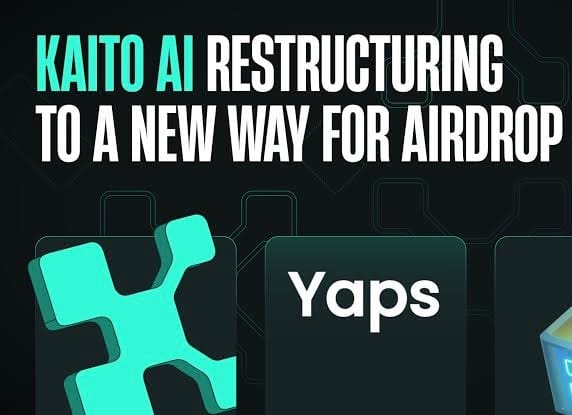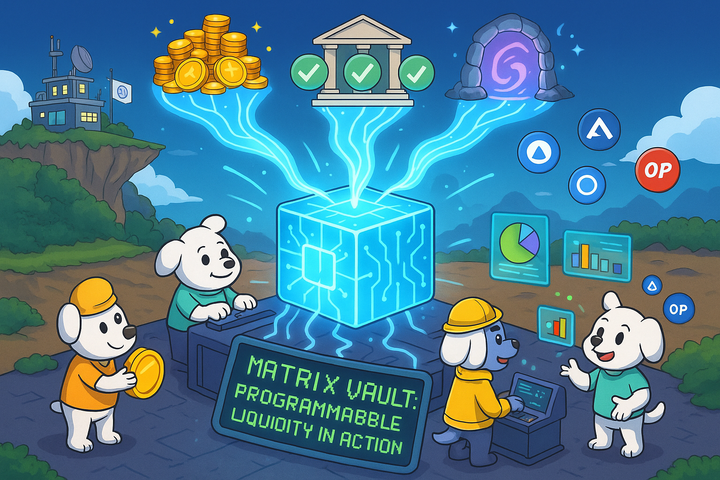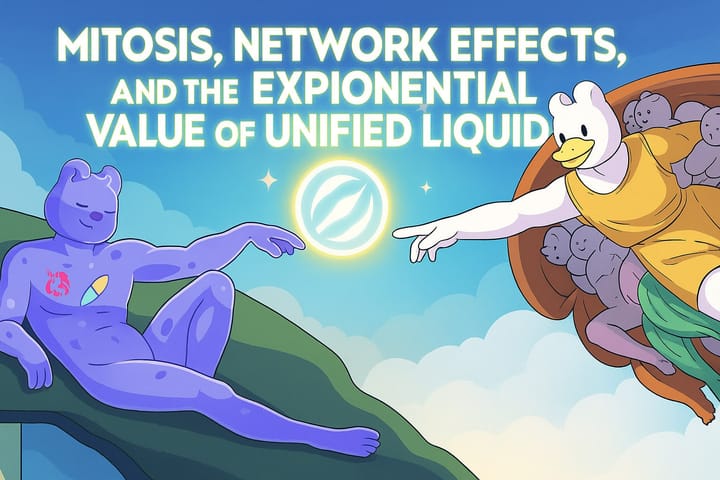From Taps to Yaps: How Web3 Airdrops Evolved from Clicker Games to AI-Fueled Attention Rewards

Introduction
Imagine waking up one day to find your phone buzzing with hundreds of new Telegram notifications, each one signaling another Notcoin earned just by tapping your screen. Fast forward a few months, and your friends have traded in their mindless tapping for crafting thoughtful crypto threads on X (formerly Twitter), all in a bid for Kaito’s highly sought-after Yap points. So, what’s changed?
Web3 airdrops have evolved significantly. Back in the early days of “tap-to-earn” (T2E), projects like Notcoin and Hamster Kombat drew millions into the Web3 world with their simple yet addictive mini-games on Telegram. But as token values plummeted and user engagement dropped, the industry began to wonder: can we incentivize real engagement instead of just mindless clicks?
That’s where Kaito AI’s “yap-to-earn” model comes in. By harnessing advanced language algorithms to assess content quality and social impact, Kaito is turning the tables—rewarding meaningful contributions rather than just a flurry of taps. In this article, we’ll dive into::
- How Telegram P2E games ignited mass adoption but struggled with retention and token sustainability
- Why Kaito’s AI-driven Yap program represents a shift toward quality-focused distribution
- What marketers and builders can learn from both models to architect the next generation of Web3 airdrops
Tap-to-Earn’s Meteoric Rise (and Inevitable Fade)
Notcoin: The Accidental Viral Sensation
Launched as a lighthearted Telegram Mini-App on the TON blockchain, Notcoin had no whitepaper, minimal marketing, and—thanks to Telegram’s viral social mechanics—surged to 20 million users in just 26 days coinspeaker.com. Its core appeal was irresistible simplicity: tap a coin icon, earn a token. Invite friends, tap some more, climb public leaderboards. Overnight, Notcoin became shorthand for Web3’s potential to onboard millions without complex wallet setups or steep learning curves.
Hamster Kombat: From Peak to Plummet
If Notcoin showed how fast P2E could scale, Hamster Kombat illustrated its fragility. At its August 2024 zenith, the game claimed 300 million registered users, leveraging referral loops and time-limited “Squads” to stoke FOMO and community competition wired.com. But by November, active monthly players had collapsed to just 41 million—an 86% decline—as users grew weary of repetitive taps and token prices tumbled cointelegraph.com. A Helika report pegged peak monthly active users at 155 million before the crash, underscoring that raw registration figures often masked true engagement theblock.co.
Lessons in Distribution Efficiency
Tap-to-earn has sparked an incredible surge in wallet growth, TON blockchain wallets skyrocketed from 6 million to over 140 million in just a year. However, it faced challenges in providing lasting value. Tokens like NOT and HMSTR experienced initial surges (with NOT jumping over 200% at launch) but then suffered steep corrections, leaving many users empty-handed when prices plummeted. The ease of tapping couldn’t hide the lack of real utility: as the novelty wore off, most users drifted away, resulting in inactive wallets and plummeting token values.
Yap-to-Earn: Rewarding Quality with Kaito AI
Reimagining Airdrops with Attention Finance
Kaito AI, fresh off a $10.8 million funding boost from Dragonfly and Sequoia China, rolled out its innovative “Yap-to-Earn” system in December 2024. Instead of just rewarding clicks, Kaito focuses on encouraging thoughtful crypto discussions. Users can rack up Yap points by sharing their market insights, tagging @KaitoAI, and igniting meaningful conversations on X. An LLM assesses each Yap for its relevance, originality, and engagement, making sure that rewards are given to truly valuable contributions. cointelegraph.com.
Tokenomic Alignment & Community Incentives
Kaito’s tokenomics allocate 10% of the 1 billion‐token supply to its initial community airdrop (including Gen-1 NFT holders and ecosystem partners), with 56.6% earmarked for broader community distribution and long-term incentives cointelegraph.com. As of late May 2025, Dune Analytics data shows 29.21% of tokens claimed by 71,929 participants, with 3.8 million tokens staked—demonstrating a willingness to lock value in exchange for future rewards theblock.co. Meanwhile, the project’s fully diluted valuation crossed $1.9 billion, reflecting market confidence in InfoFi’s promise theblock.co.
Fostering Sustained Engagement
Kaito goes beyond just distributing tokens; it’s all about building a community. They’ve set up weekly $5,000 pools to reward the top Yappers, and their leaderboards shine a light on up-and-coming creators. Plus, their staking options encourage users to stick around for the long haul. With partnerships like the Binance HODLer perks and the upcoming “Kaito Earn” hubs, they’re expanding how tokens can be used, making sure they’re tied to real user engagement. By linking rewards to how well content performs instead of just showing up, Kaito helps prevent quick token sell-offs and fosters genuine community growth.
Comparative Insights: Taps vs. Yaps
- User Acquisition vs. User Quality
- Tap-to-Earn: Onboards vast audiences quickly (tens to hundreds of millions) but sees retention slip below 20%.
- Yap-to-Earn: Engages a smaller but more committed cohort (hundreds of thousands) who produce shareable, evergreen content.
- Distribution Efficiency
- Tap-to-Earn: Broad but often “diluted” by low-value participants and wholesale token dumping.
- Yap-to-Earn: Signal-driven allocation ensures tokens flow to high-quality contributors, with built-in staking and vesting to stabilize supply.
- Sustainability & Long-Term Value
- Tap-to-Earn: Hype cycles dominate; long-term utility frequently missing.
- Yap-to-Earn: Reinforced by engagement loops, partnerships, and governance pathways—laying groundwork for InfoFi’s decentralized attention marketplace.
Conclusion & Practical Takeaways
Web3 airdrops have come a long way, evolving from just quick clicks to meaningful contributions from the community. The tap-to-earn model showed us that seamless onboarding can lead to impressive user growth, but it also brought to light the risks of superficial engagement and token price swings. Enter yap-to-earn, as seen with Kaito AI, which is paving the way for a new attention economy. This model not only tokenizes valuable conversations but also aligns incentives using AI-driven metrics and builds ecosystems with long-term token locks.
For those building and marketing in this space, think about blending strategies—start with catchy mini-apps to grab attention, then shift to models that reward genuine engagement. Incorporate gamified feedback, consider staking or vesting to prevent sell-offs, and use AI to track what really matters.
Looking ahead, will other platforms embrace InfoFi principles? Can NFT projects and DeFi protocols integrate “yap” mechanics into their governance and reward systems? As Web3 continues to evolve, the real winners will be those who transform quick taps into meaningful yaps, creating communities where every interaction truly matters.
Internal Mitosis Links & Glossary References
- Bitcoin
- Blockchain
- Cryptocurrency
- Mitosis Core: https://university.mitosis.org/mitosis-core
- Governance: https://university.mitosis.org/governance
- Glossary: https://university.mitosis.org/glossary/
- Ecosystem Connections: https://university.mitosis.org/ecosystem-connections



Comments ()